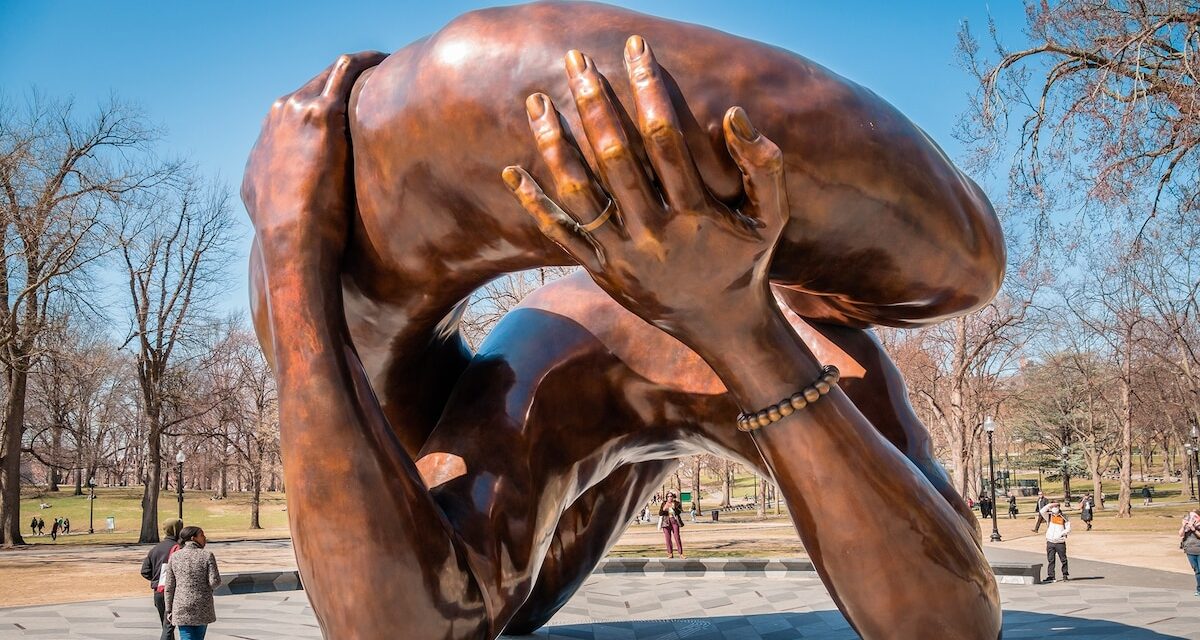
This article was produced by National Geographic Traveller (UK).
Malcolm X’s birthday will be recognised as a new annual holiday in Boston this May. Though born in Nebraska in 1925, the civil rights activist lived in the Massachusetts city on and off for 12 years during a pivotal — if controversial — era in the fight for African American rights in the US. The formative years he spent in Boston — becoming a leading Muslim minister here before his assassination at a New York rally in 1965 — have left a lasting legacy that can still be seen in the city’s monuments and thriving Black neighbourhoods.
Boston’s Black history starts long before Malcolm X, though. The Massachusetts capital was one of New England’s key slave ports in the 17th century and the state later became one of the first to abolish slavery. While the city’s 2.5-mile Freedom Trail charts the national institutes that were pivotal in the country’s fight for independence, the 1.6-mile Black Heritage Trail focuses on Beacon Hill, a historic neighbourhood that was home to the city’s largest community of African Americans prior to the Civil War.
Today, it’s a pretty suburb of narrow, gas lamp-lit cobbled streets and the location of the Museum of African American History — a good starting point to understand what came before Malcolm X. The museum’s collection spans the colonial era to the 19th century and includes stories and artefacts from Black communities. Fittingly, it’s housed within the red brick walls of the African Meeting House, built in 1806 as the African Baptist Church of Boston and now considered the nation’s oldest still-existing Black church building.

The Faces of Dudley mural in Roxbury are a historical feature of the walk and neighbourhood.
Photograph by Sergi Reboredo, Alamy Photos
Plans are underway to extend the Black Heritage Trail to the neighbourhood of Roxbury, where Malcolm X lived during his time in Boston. In his 1965 book, The Autobiography of Malcolm X, released posthumously, he said that living in Roxbury gave him a great ‘sense of being a part of a mass of [his] own kind for the first time’. Today, it’s the epicentre of the city’s African American community. Take a neighbourhood tour with passionate guides from Live Like a Local Tours Boston to discover spots such as Frugal Bookstore, a Black-owned business and community hub, and Tropical Foods, a longstanding, family-owned Afro-Caribbean and Latin American supermarket. At the latter, pick up snacks such as fresh pies and spicy beef patties.
As part of the planned updates to the Black Heritage Trail, Roxbury’s Malcolm X Boulevard is set to be extended further into Dudley Street, a major thoroughfare beside Nubian Square — a block that’s long been considered the heart of Black Boston thanks to its historical connections to social activism and African American culture. In Nubian Square, check out the Faces of Dudley mural, which features prominent local Black figures including Malcolm X, community and civil rights activist Melnea Cass and fellow campaigner Martin Luther King Jr, who met his wife Coretta Scott King a mile north of here, at the New England Conservatory of Music. Black-owned businesses thrive in the area surrounding the square; make a pitstop at Nubian Markets cafe-restaurant for classic dishes like chickpea peanut stew and jerk chicken with fragrant coconut rice — a homage to Roxbury’s African diaspora.
(MLK and Malcolm X only met once. Here’s the story behind an iconic image.)

The Embrace sculpture in Boston Common honours Martin Luther King Jr and his wife Coretta Scott King.
Photograph by Heidi Besen, Shutterstock
There’s other interesting street art to check out in the neighbourhood, too. The Roxbury Love Story mural sits at the intersection of Shawmut Avenue and Melnea Cass Boulevard, on the site of the former Twelfth Baptist Church, where Martin Luther King Jr was once assistant minister. The artwork depicts Martin Luther King Jr and Coretta Scott across two walls of a residence building, with a telephone line connecting them. A plaque highlights the significance of the site and details prominent locations pertaining to the Kings.
Roxbury has had other famous residents over the years; head down Washington Street and you’ll find a mural of Roxbury-born disco queen Donna Summer. The singer-songwriter has been immortalised on the side of Black Market Nubian, a community-led enterprise hub that aims to strengthen Nubian Square’s Black-majority community through art projects.
No visit to Roxbury would be complete without walking by the Malcolm X–Ella Little-Collins House on Dale Street, where Malcolm X lived with his half-sister, Ella Little-Collins, from 1941 to 1944. The modest house was listed on the US National Register of Historic Places in 2021 and is the only surviving residence from Malcolm’s time in Boston. It’s currently under restoration, with plans to offer tours for the first time. Before leaving Roxbury, take a stroll through Malcolm X’s greatest Boston legacy project: Malcolm X Park, formerly Washington Park, which recently underwent a $9.6m (£7.5m) renovation. Local artists were commissioned to paint three new murals on the outdoor basketball courts, and an outdoor swimming pool remains free for all — perfect for a dip on hot days.
How to do it
Airlines including Virgin Atlantic, KLM and British Airways fly daily from Heathrow to Boston. Stay at the waterfront Boston Harbor Hotel, from $497 (£397), or the art deco-inspired The Dagny, on the edge of Downtown, from $140 (£111).Published in the USA guide, available with the Jan/Feb 2025 issue of National Geographic Traveller (UK).
To subscribe to National Geographic Traveller (UK) magazine click here. (Available in select countries only).



